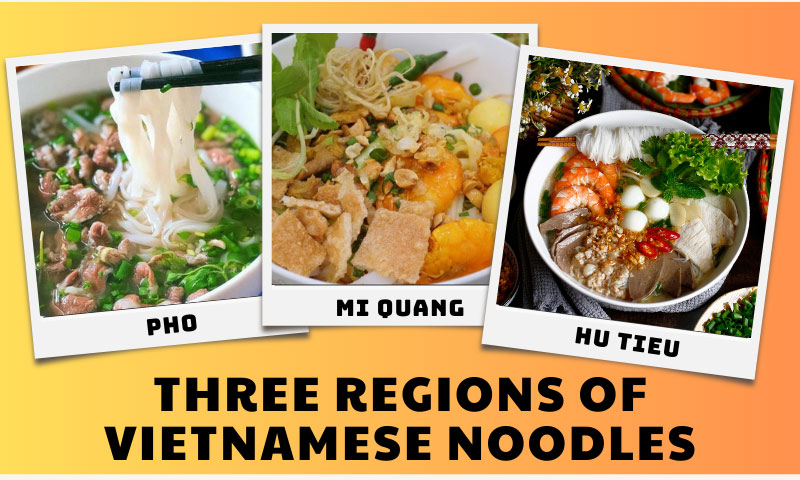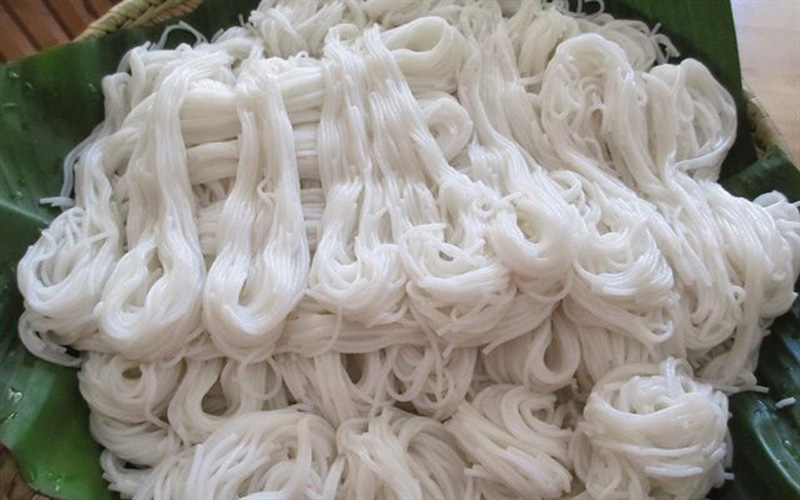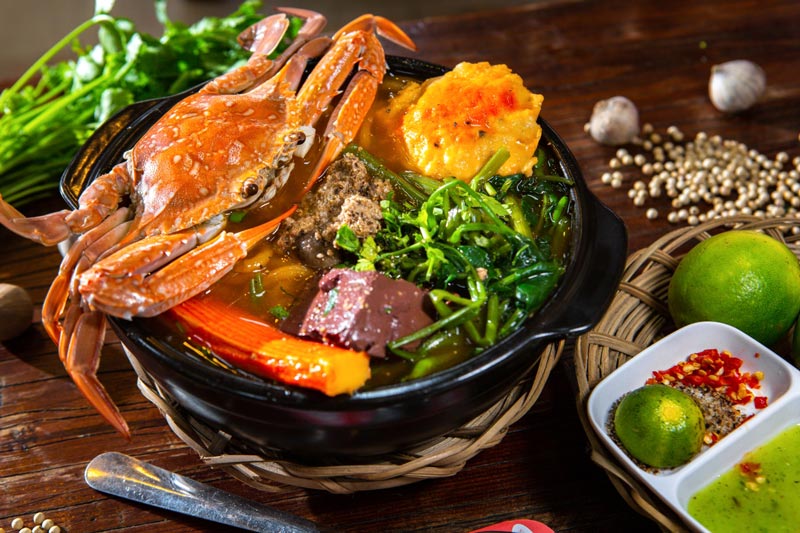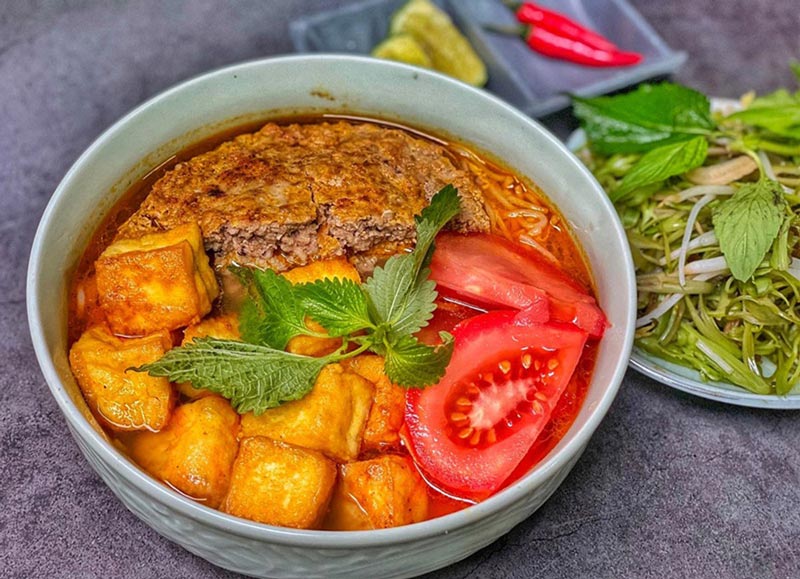In Vietnam, noodles are more than just a meal; they're a way of life. Woven into the fabric of daily routines and festive gatherings, these versatile strands represent the heart and soul of Vietnamese cuisine. From bustling street food stalls to elegant restaurants, the country boasts an astonishing variety of noodle dishes, each with its own unique blend of flavors, textures, and regional flair. Whether you prefer slurping a comforting bowl of phở or savoring the delicate crunch of glass noodles, the world of Vietnamese noodles promises a culinary adventure that will tantalize your taste buds and leave you craving more.

Vietnam's diverse landscapes and cultural traditions are mirrored in its noodle cuisine, with each region offering its own unique take on these beloved dishes. Embark on a culinary journey across the country, and discover how regional variations create a tapestry of flavors and textures that reflect the distinct character of each locale.
Northern Vietnam: In the north, where cooler temperatures prevail, hearty noodle soups like phở reign supreme. The broth tends to be clear and delicate, relying on the quality of the meat and a careful balance of spices for depth of flavor. Bún chả, with its grilled pork and vibrant dipping sauce, is a Hanoi specialty. Further north, the mountain regions offer unique noodle dishes like thắng cố, a hearty horse meat stew with noodles that warms the soul during chilly evenings.
Central Vietnam: The central region is a treasure trove of noodle delights, known for its vibrant flavors and bold use of spices. Mì quảng, with its turmeric-infused noodles and diverse toppings, is a quintessential central Vietnamese dish. Bún bò Huế, a spicy beef noodle soup with a rich, lemongrass-infused broth, originates from the former imperial capital of Huế. The coastal city of Da Nang is renowned for mì quảng and the delicate cao lầu, featuring thick, chewy noodles and savory pork toppings.
Southern Vietnam: The southern region embraces a more liberal use of sweetness and coconut milk in its cuisine. Hủ tiếu, a clear noodle soup with a variety of toppings, is a popular choice for breakfast or a light meal. Bún mắm, a noodle soup with fermented fish broth, showcases the region's affinity for pungent flavors. The Mekong Delta, known for its abundant produce, offers unique noodle dishes like hủ tiếu Sa Đéc, featuring a flavorful broth made with fish caught in the local rivers.
Beyond Regional Boundaries: While regional distinctions exist, some noodle dishes transcend geographical boundaries and are enjoyed throughout Vietnam. Bún thịt nướng, with its grilled meat and refreshing herbs, is a national favorite. The same can be said for bánh canh, which comes in countless variations depending on the region and local ingredients.

Vietnamese cuisine is a testament to the art of noodle-making, with a rich tapestry of shapes, sizes, and textures that cater to every palate and culinary creation. Let's explore this diverse world of Vietnamese noodles, each contributing a unique note to the symphony of flavors that defines this cuisine.
Rice is Nice: Rice, a staple grain in Vietnam, forms the foundation for a wide array of noodles. Delicate and almost translucent, phở noodles are the star of the iconic soup that bears their name. These flat rice noodles, often made fresh daily, soak up the fragrant broth and melt in your mouth. On the other hand, bánh canh noodles, crafted from either tapioca or rice flour, boast a thicker, chewier texture. They stand up well to hearty soups and stews, providing a satisfying bite. For lighter fare, the round and springy bún noodles come in various thicknesses, lending themselves to salads, grilled meat dishes like bún chả, and fresh spring rolls. For a unique treat, try bánh phở, wide rice noodles similar to pad see ew, often stir-fried with savory ingredients.
Eggs-quisite Additions: Egg noodles, or mì, offer a delightful change of pace from rice varieties. Made with wheat flour and eggs, they boast a slightly yellow hue and a pleasantly springy texture. Thinner than their Chinese counterparts, mì is incredibly versatile. It shines in stir-fries, noodle soups like mì quảng, and even as a simple snack tossed with a flavorful sauce.
The Allure of Glass Noodles: Derived from mung bean starch, glass noodles, or miến, bring a touch of elegance to Vietnamese cuisine. Their translucent appearance and delicate texture make them a popular choice for stir-fries, salads, and spring rolls. With a remarkable ability to absorb flavors, glass noodles effortlessly complement a variety of ingredients.
Instant Gratification: While not as traditional as other varieties, instant noodles have become a ubiquitous part of Vietnamese culinary culture. Whether enjoyed as a quick snack, a late-night comfort food, or a base for creative concoctions, these pre-cooked noodles offer convenience and a taste of familiarity.
No matter your preference – delicate or chewy, light or hearty – Vietnamese noodles cater to every craving. With their seemingly endless variations and applications, these culinary treasures are an integral part of the country's vibrant food scene. So, embark on a noodle adventure and discover the rich flavors and textures that await you in every bowl.

Vietnamese cuisine is renowned for its diverse and delectable noodle dishes, each a masterpiece of flavor and cultural significance. Let's delve into a few of the most beloved and iconic creations:
Phở (Vietnamese Noodle and Broth Dish): A true national treasure, phở is Vietnam's culinary ambassador to the world. This fragrant noodle soup is a symphony of flavors, featuring delicate rice noodles swimming in a savory broth that's simmered for hours with spices, herbs, and either beef (phở bò) or chicken (phở gà). The dish is garnished with fresh herbs like cilantro and basil, bean sprouts, lime wedges, and chili peppers, allowing diners to customize the taste to their liking. With its comforting warmth and harmonious blend of ingredients, phở holds a special place in the hearts (and stomachs) of Vietnamese people and has become one of the best Vietnamese soups beloved worldwide.
Bún Chả (Grilled Pork and Rice Vermicelli): Originating from Hanoi, bún chả is a quintessential Vietnamese dish that captures the essence of street food culture. Tender grilled pork patties, infused with a sweet and savory marinade, are served alongside a generous portion of rice vermicelli (bún). The accompanying dipping sauce, a harmonious blend of fish sauce, sugar, lime juice, garlic, and chili, elevates the flavors to new heights. This beloved dish has garnered international fame, notably through Anthony Bourdain's enthusiastic endorsement during his visit to Vietnam.
Bánh Canh (Vietnamese Thick Noodle Soup): Prepare to be captivated by the chewy texture and hearty broth of bánh canh, a thick noodle soup made from either tapioca or rice flour. The noodles, known for their satisfying bite, are often served in a rich and flavorful broth, commonly featuring seafood such as crab, shrimp, or fish. Alternative broths include pork or chicken, with the addition of various vegetables and herbs for added depth. This comforting dish offers a delightful contrast of textures and a symphony of flavors, making it a popular choice for both casual meals and special occasions.
Bún Riêu Cua (Crab Noodle Soup): With its vibrant red hue and enticing aroma, bún riêu cua stands out as a truly unique Vietnamese noodle soup. The broth, made with a base of tomatoes and crab paste, boasts a delightful balance of sweet, sour, and savory flavors. The soup is typically filled with rice vermicelli, tofu, various vegetables, and tender pieces of crab meat. This visually appealing and flavorful dish is a testament to the resourcefulness and creativity of Vietnamese cuisine, transforming simple ingredients into a culinary masterpiece.

While phở, bún chả, bánh canh, and bún riêu cua may be the superstars of Vietnamese noodle cuisine, a whole world of other delectable dishes awaits those willing to venture off the beaten path. Let's explore some of these lesser-known yet equally captivating creations:
Bún Thịt Nướng (Vietnamese Cold Noodle): In the heat of Vietnamese summers, bún thịt nướng provides a refreshing respite. This vibrant dish features cold rice vermicelli (bún) topped with succulent grilled pork, fresh herbs like mint and basil, crunchy vegetables, and chopped peanuts. The pièce de résistance is the accompanying dipping sauce, a harmonious blend of fish sauce, sugar, lime juice, garlic, and chili, which brings all the flavors together in perfect harmony. The combination of textures—from the soft noodles to the crispy pork and crunchy vegetables—makes this dish a delightful sensory experience.
Mì Quảng (Quang Noodles): Hailing from the central region of Vietnam, mì quảng is a unique and flavorful noodle dish that showcases the region's culinary identity. The signature element is the turmeric-infused rice noodles, which give the dish its characteristic yellow hue. A small amount of savory broth, often made with shrimp, pork, or chicken, coats the noodles, while a variety of toppings like grilled shrimp, pork slices, quail eggs, peanuts, and fresh herbs add depth and complexity. The dish is traditionally served with rice crackers and a side of fresh vegetables.
Cao Lầu (Hoi An Noodles): A true culinary gem exclusive to the charming town of Hoi An, cao lầu is a must-try for any food enthusiast. This dish features thick, chewy noodles made with local well water, creating a unique texture and flavor that cannot be replicated elsewhere. The noodles are topped with slices of tender marinated pork, crispy croutons, fresh herbs, and a small amount of flavorful broth. The dish is said to have origins in Chinese and Japanese culinary traditions, yet it has evolved into a distinctly Hoi An specialty.
Hủ Tiếu (Clear Rice Noodle Soup): This popular southern Vietnamese dish offers a lighter and more delicate alternative to phở. The clear broth, made with pork bones or seafood, is infused with a medley of spices and herbs, resulting in a fragrant and flavorful base for the delicate rice noodles (hủ tiếu). The soup is typically garnished with thinly sliced pork, shrimp, or other proteins, along with fresh herbs, bean sprouts, and a squeeze of lime. Hủ tiếu comes in various regional variations, each with its own unique twist on ingredients and flavors.

From the bustling streets of Hanoi to the tranquil villages of the Mekong Delta, Vietnamese noodles weave a captivating narrative of flavor, tradition, and culinary ingenuity. Each region, each village, and even each family may have their own cherished noodle recipe, handed down through generations and perfected with time.
Whether you're a seasoned foodie or a curious traveler, exploring the world of Vietnamese noodles is an invitation to embark on a sensory adventure that goes beyond mere sustenance. It's a journey that engages all your senses: the aroma of simmering broth, the vibrant colors of fresh herbs and vegetables, and the symphony of textures created by the noodles themselves. And beyond the delectable flavors, each bowl tells a story of cultural heritage, resourcefulness, and the deep connection between food and community.
The iconic phở, with its fragrant broth and delicate rice noodles, is just the beginning. Venture further to discover the grilled delights of bún chả, the hearty satisfaction of bánh canh, the unique flavors of bún riêu cua, and the refreshing coolness of bún thịt nướng. Let the turmeric-infused noodles of mì quảng transport you to central Vietnam, or indulge in the exclusive cao lầu of Hoi An. And don't forget the lighter, yet equally satisfying hủ tiếu, a testament to the southern region's culinary finesse.
But the adventure doesn't end there. As you delve deeper into Vietnamese cuisine, you'll encounter countless regional specialties and lesser-known noodle creations. Each bowl holds a surprise, a unique combination of flavors and ingredients that reflect the local terroir and culinary traditions. Seek out hidden gems in bustling markets, savor family recipes in humble eateries, and engage in conversations with local vendors to uncover the secrets behind their culinary creations.
The world of Vietnamese noodles is a testament to the country's rich culinary heritage, where simple ingredients are transformed into culinary masterpieces. It's a world where every slurp, every bite, and every bowl tells a story. So, pack your bags, grab your chopsticks, and set off on a culinary odyssey that will nourish your body, ignite your senses, and leave you with a newfound appreciation for the art of noodle-making.